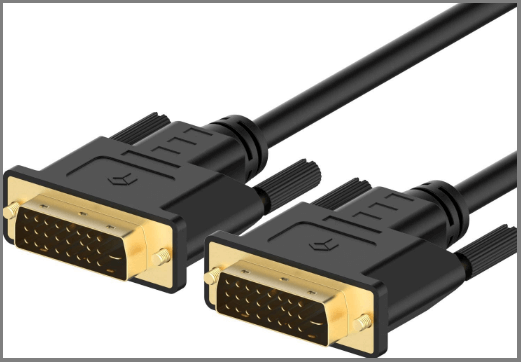What is the Digital Visual Interface (DVI)? As a video display interface, it is used to connect a video source. And if you want to know more detailed information about it, then this post is what you need.
Overview of DVI
Definition
What is DVI? It is short for Digital Visual Interface, which can be used to connect a video source like a video display controller. As a video display interface, it is developed by the Digital Display Working Group (DDWG). It was developed to create an industry standard for the transfer of digital video content. Keep reading and MiniTool will give you more detailed information about it.

The DVI interface can transmit uncompressed digital video and can be configured to support multiple modes such as DVI-A (analog only), DVI-D (digital only), or DVI-I (digital and analog). The DVI specification has support for analog connections and is compatible with the VGA interface.
This compatibility and other advantages made the DVI interface widely recognized in the Plug and Display (P&D) and Digital Flat Panel (DFP) of competing for digital display standards. Although DVI is primarily associated with computers, it can sometimes be used in other consumer electronics products, such as televisions and DVD players.
Cable
The recommended maximum length of the DVI cable is not included in the specification because it depends on the pixel clock frequency. Generally, displays with a maximum cable length of 4.5 meters (15 feet) have a resolution of up to 1920 × 1200.
The resolution of the monitor with the longest cable length of 15 meters (49 feet) can be 1280 × 1024 or lower. In order to obtain a greater distance, it is recommended to use a DVI booster (a signal repeater that can use an external power supply) to help reduce signal degradation.
Connector
The DVI connector on the device has one of three names, depending on the signal it implements:
- DVI-I (integrated, combines digital and analog in the same connector; digital can be single link or dual link)
- DVI-D (digital only, single link or dual link)
- DVI-A (Analog only)
Most DVI connector types (except DVI-A) have pins that can pass digital video signals. There are two kinds of DVI connectors: single link and double link. Single-link DVI uses a single 165 MHz transmitter and supports resolutions up to 1920 × 1200 at 60 Hz.
Dual-link DVI adds six pins in the center of the connector for the second transmitter, which increases bandwidth and supports resolutions up to 2560 × 1600 at 60 Hz. Connectors with these extra pins are sometimes called DVI-DL (dual link).
Dual link should not be confused with dual display (also known as dual head), which is a configuration that is sometimes used by a single computer connected to two monitors, and DMS-59 is used for two single link DVI connections.
In addition to digital, some DVI connectors also have pins for transferring analog signals, which can be used to connect an analog monitor. The analog pins are the four pins surrounding the flat blade on the DVI-I or DVI-A connector.
For example, a VGA monitor can be connected to a video source with DVI-I by using a passive adapter. Because the analog pins are directly compatible with VGA signaling, passive adapters are simple to manufacture and low cost, providing a cost-effective solution for supporting VGA on DVI.
The long flat pins on the DVI-I connector are wider than the same pins on the DVI-D connector, so even if you manually removed the four analog pins, you still cannot connect the DVI-I male to the DVI-D female head. However, you can connect the DVI-D male connector to the DVI-I female connector.
DVI is the only popular video standard that includes analog and digital transmission in the same connector. Competing standards are only digital standards: these standards include systems that use low-voltage differential signaling (LVDS), which is known by its proprietary names FPD-Link (flat-panel display) and FLATLINK; and its successors, the LVDS Display Interface (LDI) and OpenLDI.
Some DVD players, HDTV televisions, and video projectors have DVI connectors that use High-bandwidth Digital Content Protection (HDCP) protocols to transmit encrypted signals for copy protection. The computer can be connected to HDTV via DVI, but the graphics card must support HDCP to play content protected by digital rights management (DRM).
Related post: An Introduction to HDMI to DVI (HDMI to DVI Adapter Cable)
Final Words
This post is mainly talking about the Digital Visual Interface (DVI), after reading this post, you can know its definition, cable as well as connector.